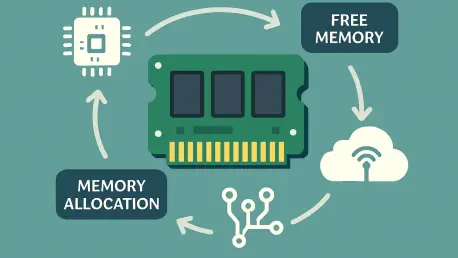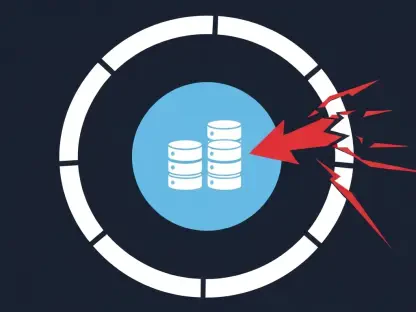Imagine a world where billions of devices, from smart thermostats in homes to sensors in autonomous vehicles, communicate seamlessly, driving efficiency and innovation across industries. This is the reality of the Internet of Things (IoT) and embedded systems, which have become the backbone of modern technology. These systems underpin a vast array of applications, shaping everything from consumer electronics to industrial automation, and their significance continues to grow as connectivity becomes ubiquitous.
The scope of IoT and embedded systems spans diverse domains, including smart home devices, automotive control units, and edge computing solutions that process data closer to its source. Their ability to operate in real-time with minimal latency makes them indispensable in critical sectors like healthcare, where wearable devices monitor vital signs, and in transportation, where embedded systems ensure vehicle safety. This widespread adoption highlights the need for robust, efficient technologies to support such varied use cases.
Key market players, including tech giants and specialized firms, are investing heavily in this space, with Linux adoption playing a pivotal role due to its flexibility and cost-effectiveness in platforms like Raspberry Pi OS. As low-power hardware dominates the IoT landscape, resource efficiency emerges as a critical factor. The push for smaller, energy-efficient devices drives innovation, setting the stage for solutions that can maximize performance in constrained environments.
Memory Management Challenges in Resource-Constrained Environments
Limitations of Traditional Allocators
In the realm of IoT and embedded systems, memory management poses a significant hurdle, particularly when relying on conventional allocators like ptmalloc, the default in many Linux-based systems. While widely used, ptmalloc often struggles to deliver optimal performance in settings with limited resources, leading to inefficiencies that can stall operations. Its design, tailored for general-purpose computing, fails to address the unique demands of compact hardware.
Alternative allocators, such as jemalloc and tcmalloc, aim to improve upon ptmalloc but introduce their own set of challenges. These solutions, though effective in high-performance scenarios, often consume excessive memory and come with complex implementations that bloat system requirements. Such drawbacks render them less suitable for the tight constraints of IoT devices, where every byte of memory counts.
The industry recognizes a pressing need for lightweight memory management solutions specifically engineered for embedded environments. Unlike general-purpose tools, these alternatives must prioritize minimal overhead and streamlined functionality to ensure smooth operation on devices with scarce resources. Addressing this gap is essential for the continued evolution of connected technologies.
Performance Metrics and Industry Needs
Data from testing on platforms like Raspberry Pi reveals stark realities about memory usage and execution times in resource-scarce settings. For instance, inefficient allocators can lead to significant delays in processing, with memory fragmentation often exacerbating the problem by wasting valuable space. These inefficiencies directly impact device responsiveness, a critical factor in real-time applications.
As IoT devices proliferate, with billions expected to be deployed over the next few years, the demand for efficient memory management intensifies. Industry forecasts suggest that without addressing these performance bottlenecks, scalability will be severely hampered, limiting the potential of next-generation applications. The strain on hardware could result in shorter device lifespans and increased operational costs.
Looking ahead, projections indicate that unresolved memory challenges could stifle innovation in edge computing and smart infrastructure by as much as 30% over the coming decade if current trends persist. This underscores the urgency for novel approaches that can optimize resource allocation, ensuring that even the smallest devices can handle increasingly complex tasks without compromise.
Introducing LWMalloc: A Game-Changing Solution
Amid the challenges of memory management in constrained environments, LWMalloc emerges as a revolutionary ultra-lightweight memory allocator tailored for IoT and embedded systems. Developed with a focus on compactness and speed, this solution tackles the inefficiencies of traditional tools head-on. Its design prioritizes minimal resource usage while maintaining high performance, setting a new benchmark for the industry.
Key features of LWMalloc include lightweight data structures that reduce metadata overhead, a deferred coalescing policy that minimizes redundant operations, and dedicated small chunk pools for constant-time allocation of frequent small memory requests. These elements work in tandem to ensure that the allocator operates efficiently, even on hardware with severe limitations, making it ideal for a range of low-power devices.
Experimental results further validate its impact, demonstrating a 53% faster execution time and 23% lower memory usage compared to ptmalloc on test platforms like Raspberry Pi. With a codebase of just 530 lines and a size of 20 KB, LWMalloc proves that powerful solutions can come in small packages, offering a compelling alternative for developers seeking to optimize performance in tight constraints.
Navigating Technical and Implementation Hurdles
Designing memory allocators for IoT and embedded systems involves striking a delicate balance between compactness and performance, a challenge that LWMalloc has had to confront. Ensuring that the allocator remains lightweight while delivering robust functionality requires innovative approaches to data handling and operation scheduling. Even minor inefficiencies can have outsized impacts in such environments.
Compatibility with existing systems presents another obstacle, as integrating a new allocator can disrupt established workflows and require adjustments to software architectures. Developers may also face a learning curve when adopting unfamiliar tools, potentially slowing down deployment timelines. These issues highlight the importance of strategic planning during the integration process.
To mitigate these challenges, approaches such as modular integration can facilitate smoother transitions by allowing gradual implementation. Comprehensive documentation and community support further aid adoption by equipping developers with the resources needed to understand and utilize LWMalloc effectively. Such strategies ensure that the benefits of this solution are accessible to a wide audience despite initial hurdles.
Compliance and Standards in IoT Software Development
The regulatory landscape for IoT and embedded systems is complex, encompassing security, interoperability, and safety standards that must be adhered to for market acceptance. These guidelines are crucial in ensuring that devices operate reliably across diverse ecosystems while protecting user data from vulnerabilities. Compliance is non-negotiable in an era where breaches can have far-reaching consequences.
Memory management software, as a core component of device functionality, plays a vital role in meeting these standards. Efficient allocation directly influences system stability and security, preventing issues like buffer overflows that could compromise data integrity. Solutions in this space must align with best practices to guarantee safe and consistent performance across applications.
LWMalloc stands out by maintaining a minimal footprint while adhering to industry expectations for reliability and security. Its design incorporates principles that support compliance without sacrificing efficiency, ensuring that devices using this allocator can meet stringent requirements. This alignment with regulatory frameworks positions it as a trusted choice for developers navigating the complexities of IoT software development.
Future Prospects of Memory Management in IoT
Looking toward the horizon, LWMalloc holds transformative potential for IoT and edge computing by enabling complex applications on low-cost hardware. This capability could redefine how affordable devices are utilized, allowing manufacturers to incorporate advanced features without inflating costs. The ripple effect may extend to broader accessibility of cutting-edge technology across global markets.
Emerging trends, such as a heightened focus on sustainability and energy efficiency in device design, further amplify the relevance of lightweight solutions. As industries strive to reduce environmental footprints, tools that optimize power consumption and extend hardware longevity become invaluable. Memory management innovations are poised to play a central role in achieving these green objectives.
Global economic conditions and technological advancements will also shape the adoption of specialized solutions like LWMalloc. As investment in IoT infrastructure grows, particularly in developing regions, the demand for cost-effective, high-performance tools is expected to surge. This dynamic landscape presents opportunities for tailored allocators to drive progress in connected ecosystems worldwide.
Conclusion: The Path Forward with LWMalloc
Reflecting on the insights gained, it becomes evident that LWMalloc offers unparalleled advantages with its superior performance and compact design, addressing critical pain points in IoT and embedded systems. Its ability to outperform traditional allocators marks a significant milestone in memory management. The experimental validations conducted underscore its practical impact on real-world applications.
Beyond immediate benefits, the broader implications of this innovation inspire hope for reducing e-waste and enhancing technology access. Industry stakeholders and developers are encouraged to adopt lightweight solutions like LWMalloc to foster sustainable growth. Exploring partnerships and open-source contributions could further amplify its reach and adaptability.
As an actionable step, integrating such tools into upcoming IoT projects is seen as vital for scalability. Prioritizing education around efficient memory practices also emerges as a key focus to empower the next generation of innovators. These efforts promise to build a foundation for resilient, future-ready connected systems.









